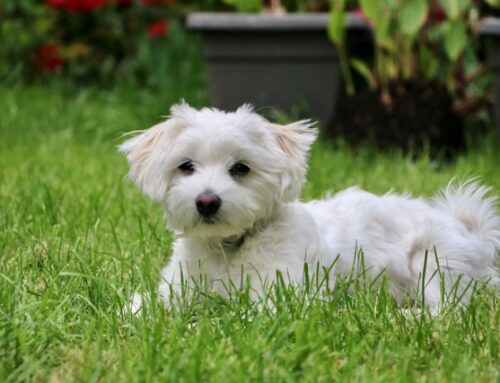Overview
Introduction: How to Stop a Dog From Digging
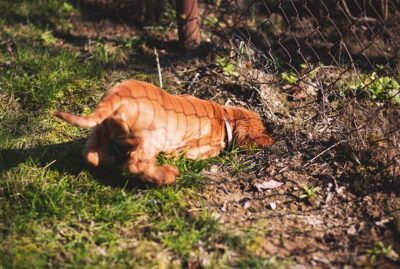
Welcome to the world of canine companionship, where the joy of wagging tails meets the challenge of digging paws. In this comprehensive guide, we’ll delve into the fascinating journey of understanding why dogs dig and, more importantly, share effective strategies on how to stop a dog from digging.
Let’s unearth solutions together to create a harmonious living space for you and your furry friend. Explore our positive and practical tips on how to stop a dog from digging, ensuring a happier bond and a beautifully maintained environment.
Understanding the Instinct
Canine Digging Behavior
Dogs are natural diggers, their instinct deeply rooted in their DNA. Understanding this behavior is the first step in addressing and redirecting it.
Why Dogs Dig
Explore the various reasons why your furry companion might indulge in digging, from instinctual drives to environmental factors. Not all dogs dig for the same reasons; some may be seeking a cool spot in hot weather, while others might be fulfilling a natural instinct to create a den.
Understanding the intricacies of a dog’s brain and the motivations behind digging is crucial for implementing effective strategies to curb this behavior. Many dogs exhibit this behavior for reasons such as seeking comfort, addressing excess energy, or creating a designated digging area.

Addressing Common Behaviors
Stop Digging: Dogs dig for comfort, escape, or boredom. To stop digging, provide mental stimulation, exercise, and a designated digging area. Consistent training and positive reinforcement create a harmonious, happy environment for your canine companion.
Observing Dog’s Behavior: Understanding why dogs dig is essential. They may dig for comfort, escape, or out of boredom. By observing your dog’s behavior, you can address these common reasons. Offering mental stimulation, ample exercise, and a designated digging area redirect their energy positively, ensuring a balanced and happy environment for your furry friend.
Creating a Dog’s Dig Pit: To address common digging behaviors in dogs, consider creating a designated digging area, often referred to as a ‘dig pit.’ Dogs may dig out of instinct, seeking comfort or entertainment. Offering a dedicated space for digging allows them an appropriate outlet for this natural behavior, promoting a harmonious environment and minimizing unwanted digging in other areas.

Breeds Prone to Digging
Certain dog breeds have a natural inclination towards digging, showcasing their diverse characteristics and instincts. Understanding these breeds aids in developing targeted strategies to manage and redirect their digging tendencies.
Border Collies: Border Collies, with their intelligence and energy, are prone to digging. Understanding this natural behavior, provide mental stimulation, ample exercise, and a designated digging area to keep your Border Collie content and balanced.
Siberian Huskies: Siberian Huskies, known for their energetic nature, are prone to digging. This natural behavior can stem from their instincts, curiosity, or a need for exercise. To address this, provide mental stimulation, ample playtime, and consider a designated digging area to keep your Siberian Husky content and engaged.

Environmental Triggers and Solutions
- Hot Weather and Digging Holes: In hot weather, dogs may frantically dig to find a cool spot. Provide a designated digging area filled with soft soil, encouraging appropriate activity.
- Fence Line Fix: Dogs love to dig along the fence line. To prevent this, bury chicken wire at the base of the fence. This simple solution deters digging without harming your dog.
- Digging Breeds and Mental Enrichment: Certain breeds have a natural inclination for digging. Offer mental and physical enrichment, like puzzle toys and sniffy walks, to fulfill their digging desires in a positive way.
- Attention-Seeking Behavior: Some dogs dig for attention. Ensure they receive enough physical exercise and spend time engaging in activities together to prevent boredom and attention-seeking behavior.
- Separation Anxiety and Digging: Dogs with separation anxiety may dig to cope with stress. Address underlying causes, provide sufficient physical and mental enrichment, and consider consulting a behavior professional.

Behavioral Analysis
Observing Digging Patterns
Time of Day
Analyze your dog’s digging patterns based on the time of day and tailor your approach to address specific triggers. Whether it’s a morning ritual or an afternoon pastime, understanding the timing helps in creating a proactive strategy.
Preferred Digging Spots
Identify your dog’s preferred digging spots and strategize ways to redirect this behavior to designated areas. By observing where your dog tends to dig, you can create a more targeted and effective plan.

Dog-Friendly Landscaping
Designing a Digging Zone
Choosing the Right Area
Designate a specific area for digging and understand the criteria for choosing the right location to encourage positive digging behavior. Consider factors like accessibility, soil type, and proximity to your dog’s favorite play spots.
Filling the Zone with Distractions
Enhance your dog’s digging zone with distractions and engage their senses to make it an enticing and fulfilling space. Incorporate elements like chew toys, scented objects, or even buried treats to make the designated area more appealing.
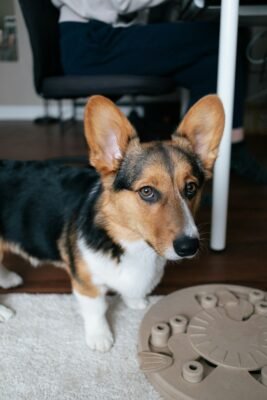
Physical and Mental Exercise
Enrichment Activities
Puzzle Toys
Introduce puzzle toys to stimulate your dog’s mental faculties and divert their focus from digging to engaging play. Puzzle toys provide mental exercise and prevent boredom-induced digging.
Interactive Playtime
Incorporate interactive playtime into your daily routine to provide both physical and mental exercise, reducing the likelihood of digging out of boredom. Regular play sessions strengthen the bond between you and your dog while fulfilling their need for activity.
Positive Reinforcement Techniques
Reward-Based Training
Treats and Affection

Implement a reward-based training approach using treats and affection to reinforce positive behaviors and discourage digging. Positive reinforcement creates a positive association with designated digging areas.
Clicker Training
Explore the effectiveness of clicker training as a positive reinforcement technique, creating a strong bond with your dog while addressing digging behavior. The clicker signals a reward, reinforcing desired behaviors.
Redirection Strategies
Diverting Attention
Interactive Play
When it comes to managing behavior, redirection strategies play a key role. One effective method is diverting attention through interactive play.
Engaging your dog in playful activities not only redirects their focus but also strengthens the bond between you and your furry friend. Interactive play serves as an enjoyable and positive way to channel their energy, ensuring a happy and well-behaved companion.
Redirecting to Toys
Discover effective ways to redirect your dog’s digging instincts toward toys, ensuring a constructive and enjoyable alternative. By offering appropriate outlets for their energy, you can prevent destructive digging behavior.
Understanding your dog’s behavior is key to addressing digging challenges. Whether it’s creating a designated digging zone, incorporating enrichment activities, or using positive reinforcement, these strategies empower pet parents to foster a harmonious environment for both dogs and their human companions.

Digging Deterrents
Safe Repellents
Citrus Scents: A Safe Odyssey in Repellents
To deter digging, safe repellents can be a valuable solution. Citrus scents, in particular, offer a safe and effective option. Dogs often find the smell of citrus unappealing, making it a natural deterrent. By incorporating citrus-scented repellents, you can create a safe and pet-friendly strategy to discourage digging behavior in your furry companion.
Pet-Safe Sprays: Unveiling the Merits of Effective Digging Deterrents
When it comes to preventing unwanted digging, pet-safe sprays emerge as effective deterrents. These specially formulated sprays offer a safe and gentle way to discourage digging behavior in your furry friend. Discover the merits of these pet-safe solutions, providing a reliable and humane approach to maintaining a well-kept outdoor space.
Ingenious Measures: Beyond Citrus Scents and Pet-Safe Sprays
Extend your arsenal of dog-friendly solutions with additional ingenious measures like cayenne pepper, strategically placed large rocks, and scattered coffee grounds. Envision creating a landscape where these natural elements become barriers, deterring your dog from initiating digging projects.
Introduce the concept of poultry fencing, an innovative and humane way to prevent digging in specific areas. Imagine a garden where both plants and pets coexist harmoniously, untouched by the urge to dig, creating a peaceful haven for all.
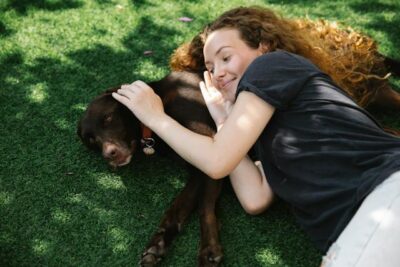
Providing Comfort
Adequate Shelter and Shade
Assessing Outdoor Conditions: Prioritize your dog’s comfort by thoroughly assessing outdoor conditions. Consider factors like shelter and shade to create a relaxing outdoor space that minimizes stressors contributing to digging behavior.
Creating a Comfortable Space: Explore strategies to fashion a comfortable space for your dog. By minimizing potential stressors, you can create an environment that discourages digging while promoting relaxation.
Consultation with a Veterinarian
Health Check
Identifying Underlying Health Issues: Ensure your dog’s well-being by seeking a health check to identify and address any underlying health issues contributing to digging behavior. A proactive approach to health is key in curbing unwanted behaviors.
Seeking Professional Advice: Recognize the importance of seeking professional advice from a veterinarian. Their expertise allows them to develop a customized plan tailored to your dog’s unique needs, addressing both physical and behavioral aspects.
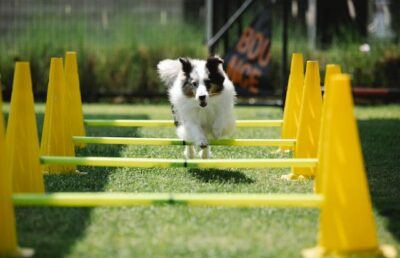
DIY Digging Solutions
Creating Obstacle Courses
Engaging Digging Challenges: Construct interactive obstacle courses that provide a structured environment for your dog to channel their digging instincts positively. This engaging approach redirects their energy toward activities that align with their natural behavior.
Building Digging Pits: Explore the concept of building designated digging pits as a DIY solution. These specially crafted areas serve as outlets for your dog’s innate digging tendencies, fostering a harmonious coexistence.
Consistency in Training
Establishing Routines: A Professional Approach
Take a professional dog trainer’s perspective to establish routines that go beyond the ordinary. Infuse your daily schedule with consistent training sessions, guided by the expertise of a seasoned dog trainer. By integrating professional techniques into your routine, you not only reinforce positive behaviors but also create a structured environment conducive to cultivating desirable habits in your furry companion.
Daily Training Sessions with a Dog Walker’s Insight
Imagine daily training sessions guided by a dog walker’s insight into canine behavior. Enlist the expertise of someone familiar with various breeds and their unique traits to ensure that your dog’s training aligns with their specific needs. This collaborative approach not only reinforces positive behaviors but also introduces a level of engagement that enhances your dog’s overall well-being.

Navigating Commands: Curating Clarity for Canine Understanding
Recognize the significance of consistent commands, envisioning them as a universal language between you and your dog. Employ clear and consistent cues, drawing inspiration from professional dog trainers who specialize in effective communication.
Picture a scenario where your commands serve as a roadmap, guiding your dog away from undesirable behaviors like digging. This clarity fosters a deep understanding between you and your furry friend, making behavior redirection a seamless and effective process.
Dog-Friendly Spaces: Tailoring Training for a Dig-Free Zone
Extend your training consistency to encompass the spaces your dog frequents. Enlist the help of a professional dog trainer to tailor your training approach to create a dog-friendly environment, ensuring that your canine companion not only understands commands but also associates them with specific areas. Picture a harmonious living space where your dog, guided by consistent training, naturally gravitates toward designated zones, leaving your garden untouched by the urge to dig.
Incorporating Expertise: A Holistic Approach to Stop Digging
Incorporate the insights of professional dog trainers and dog walkers into your training routines to address specific digging concerns effectively. By adopting a holistic approach, you create a comprehensive training regimen that not only stops your dog from digging but also promotes their overall well-being. Picture a well-trained, contented canine companion, and a garden free from the disruptions of digging.
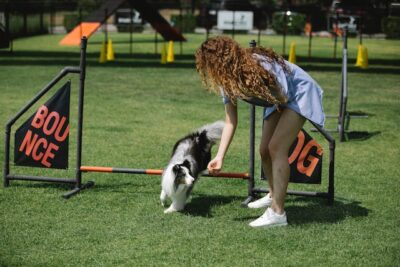
Optimizing Progress for a Dig-Free Lifestyle
Tracking Positive Changes in Dog Behavior
Efficiently monitor and record positive shifts in your dog’s behavior, creating a valuable log of improvements. The process involves celebrating successes, whether they’re related to stopping digging, reducing excess energy, or preventing your dog from starting to dig in the first place. These documented improvements serve as a roadmap to refining your training strategies based on your dog’s unique responses.
Adapting Strategies to Your Dog’s Progress
Maintain a flexible approach when adjusting training strategies, ensuring they align with your dog’s evolving progress and individual quirks. Recognize that the journey to stop digging is a dynamic one, requiring adaptability in your methods. By tailoring your strategies based on your dog’s response, you ensure a customized and effective approach to address digging behaviors.

Avoiding Common Pitfalls in Dog Training
Steering Clear of Punitive Measures
Understand the negative consequences associated with punitive measures in dog training, particularly when addressing digging behaviors. Acknowledge that punitive approaches can have adverse effects on your dog’s well-being, potentially leading to increased stress or fear. Shift toward positive approaches to cultivate a healthier bond and promote a positive learning environment.
Embracing the Power of Positive Training Approaches
Delve into the benefits of positive training approaches, recognizing their transformative impact on your relationship with your dog. Cultivate a conducive learning environment by fostering positive interactions and reinforcing desired behaviors. In the context of digging, this positive approach not only stops your dog from digging but also builds trust and strengthens the bond between you and your furry companion.
Sculpting a Dig-Free Future: A Holistic Perspective
Navigate the process of stopping your dog from digging by actively addressing common challenges. Whether it’s dealing with excess energy, preventing your dog from starting to dig, or managing interactions with other animals, a holistic perspective ensures that your training efforts lead to a harmonious and dig-free lifestyle. Picture a future where your dog thrives in a positive environment, free from the inclination to dig, and your shared bond deepens with each training session.
FAQ: How to Stop a Dog from Digging
- Q1: Why do dogs dig?
- A1: Dogs may dig for various reasons, including instinctual behavior, excess energy, boredom, or an attempt to create a comfortable resting spot.
- Q2: How can I stop my dog from digging in the yard?
- A2: To stop your dog from digging, provide ample mental and physical stimulation, designate a specific digging area, and use deterrents like cayenne pepper, citrus scents, or pet-safe sprays.
- Q3: Are there specific breeds prone to digging?
- A3: While digging tendencies vary, breeds like terriers, dachshunds, and huskies may exhibit a higher inclination to dig due to their historical roles or energy levels.
- Q4: What can I do if my dog starts digging excessively?
- A4: Identify the root cause, such as excess energy or boredom, and address it through increased exercise, interactive toys, or designated digging zones.
- Q5: Should I create a digging pit for my dog?
- A5: Yes, providing a designated digging pit can channel your dog’s natural instinct positively, allowing them to express their digging behavior in an appropriate area.
- Q6: How can I stop my dog from digging holes in the flower beds and vegetable garden?
- A6: Use deterrents like large rocks, cayenne pepper, chicken wire, or protective barriers. Additionally, consider creating a separate, appealing digging area with soft soil.
- Q7: Can a dog walker help prevent digging behavior?
- A7: Yes, a dog walker can contribute to preventing digging by ensuring your dog gets regular exercise, mental stimulation, and attention during your absence.
- Q8: Is loud noise an effective deterrent for dogs digging?
- A8: Yes, loud noises, such as clapping or using a whistle, can startle dogs and interrupt their digging behavior, serving as a short-term deterrent.
- Q9: What role does a dog house play in preventing digging?
- A9: Providing a comfortable dog house can offer shelter and a sense of security, reducing the likelihood of digging as your dog seeks a cozy spot.
- Q10: How can I stop my dog from digging in the entire yard?
- A10: Limit your dog’s access to the entire yard initially. Gradually introduce them to specific areas, reinforcing positive behavior and deterring digging in unwanted areas.
- Q11: Should I consider a kiddie pool to prevent digging in hot weather?
- A11: Yes, a kiddie pool can be a great solution, especially in hot weather. Dogs may enjoy digging or lying in the cool soil around the pool instead of digging elsewhere.
Summary: How To Stop A Dog From Digging
Recap of Key Strategies
Prevention and Understanding
In summary, mastering how to stop a dog from digging requires a multifaceted approach that combines prevention and understanding. Recognizing the reasons behind this behavior, such as boredom or instinctual needs, is key to implementing effective strategies. Prevention involves creating designated digging areas, utilizing interactive toys, and employing safe deterrents.
Understanding your dog’s specific triggers and redirecting their behavior positively contributes to a harmonious living environment. By incorporating these key strategies on how to stop a dog from digging, you can not only curb unwanted behavior but also enhance the overall well-being and satisfaction of your canine companion.
Positive Reinforcement and Patience
In summary, addressing dog digging involves implementing key strategies centered around positive reinforcement and patience. Recognizing the root causes of digging behavior, such as boredom or instinctual needs, is crucial. Creating designated digging areas, using interactive toys, and offering positive reinforcement for desired behavior are effective approaches.
Patience plays a vital role as you work with your canine companion to redirect their instincts positively. By consistently applying these strategies, you can foster a positive environment and strengthen the bond between you and your furry friend.
Conclusion: How To Stop A Dog From Digging
As you embark on the journey of learning how to stop a dog from digging, keep in mind that patience and understanding are your greatest allies. By applying effective strategies to address common dog digging behaviors, understanding your dog’s breed-specific tendencies, and establishing a designated digging area or pit, you’re not just preventing a dog from digging—you’re cultivating a stronger, more harmonious bond with your furry friend.
Celebrate each small victory along the way, envisioning a garden free from holes and a relationship full of joy and companionship! For additional insights into dog care, behavior, and different breeds, explore our blog. We’re here to support you in your journey to being a knowledgeable and caring dog owner.
If you’re looking to add a furry friend to your family, we are selling puppies in Florida and surrounding areas, or explore our listings for puppies in Georgia and its neighboring regions. We’re dedicated to helping you find the perfect canine companion for your home.




